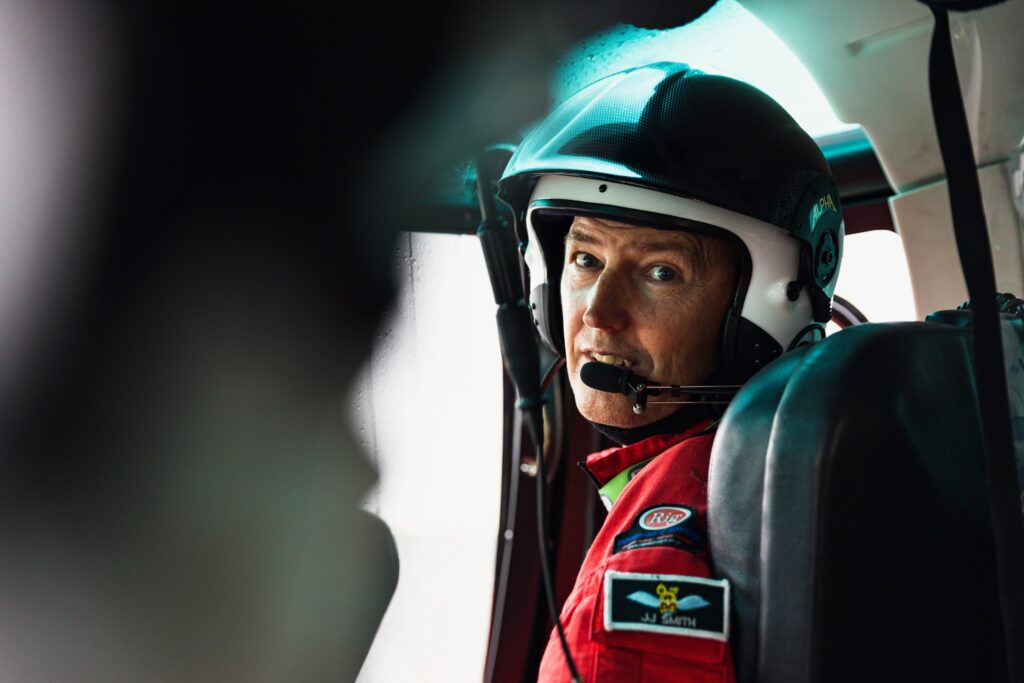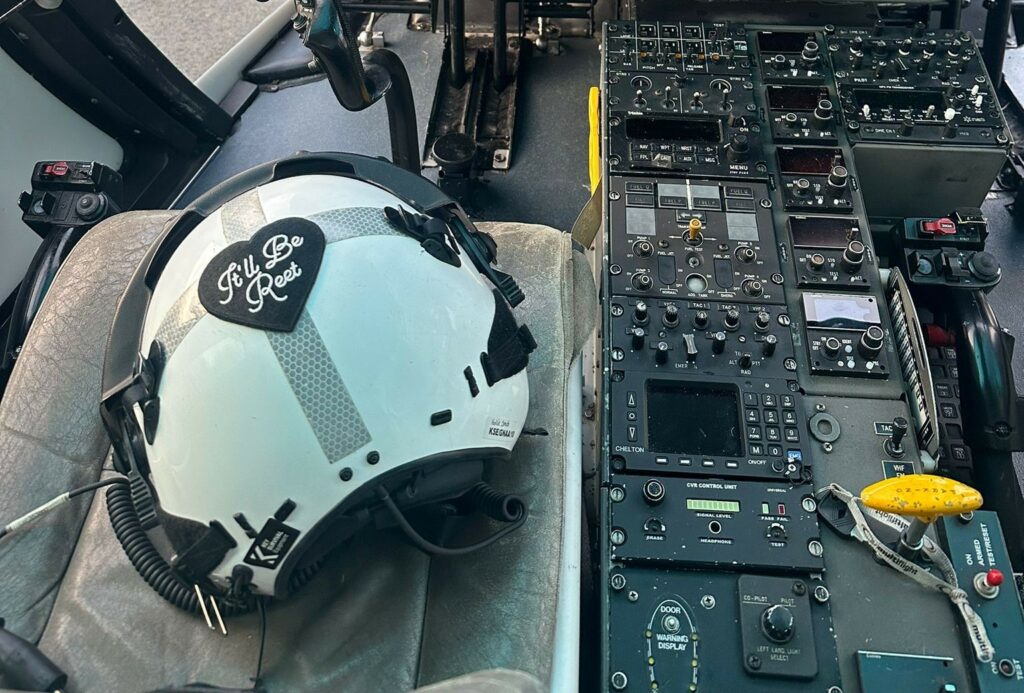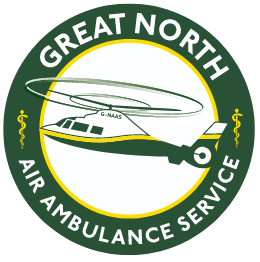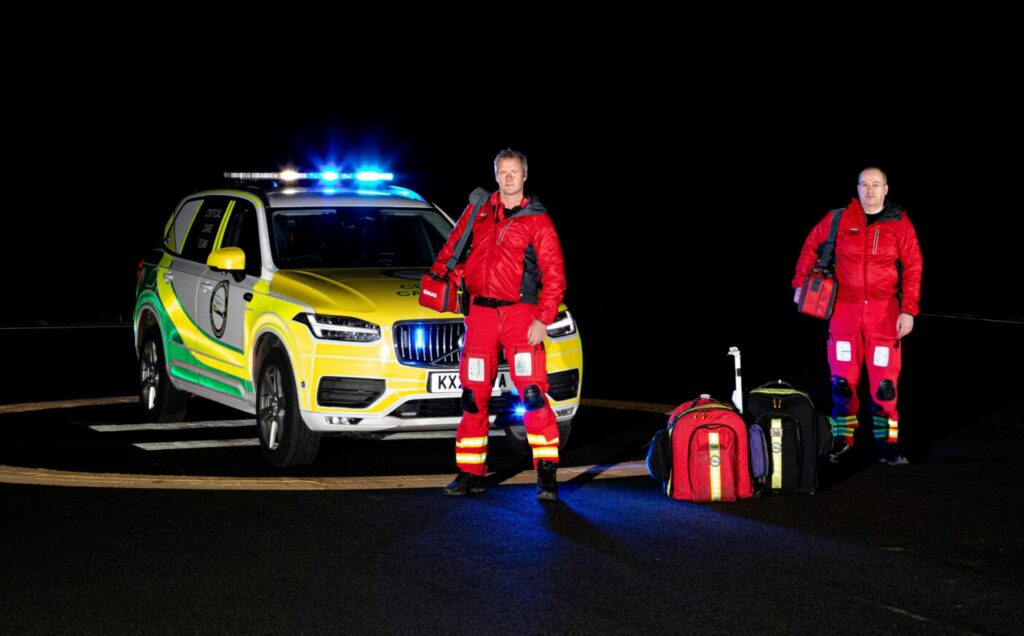Our pilot, paramedic, and doctor put on their specialist helmets each time they step into our aircraft. They are a clear non-negotiable part of their flight uniform and offer protection and the ability to communicate.
We had a chat with pilot JJ about the importance of this headwear.
What are the impact and penetration risks to the head that are faced by the team?
When we are going in and out of landing sites or flying around at the levels that we do, there is a chance that we could encounter birds and suffer a bird strike, should one of the birds come through the windscreen.
We have visors on our helmets which help to protect our face from impact, as well as the rest of the helmet protecting our head.
The helmets also provide Foreign Object Damage (FOD) protection for the crew when they disembark or are outside when the engine starts.


Our helicopters are very noisy, do the helmets help to reduce this noise and protect your ears?
It is very noisy in the helicopter and it can damage your hearing if you’re exposed to it for a long time.
Luckily the design of the helmets significantly reduces unwanted noise, and some of our crew wear additional ear buds.
How do the helmets incorporate communications?
Our helmets are fitted with a microphone and earpieces, and we have an integrated system within the helicopter so our helmets can plug straight into the comms system.
This helps us communicate with each other throughout take-off, the flight and landing, and talk to air traffic control and any other agencies that we need to.
How heavy are the helmets?
Each helmets weighs 1.7kg. They seem well balanced and have little impact on fatigue as we operate short hops, our longest flight tends to be around 35 minutes, which is when we’re flying to the Isle of Man.
Some of the team wear glasses. Do they interfere or impact on the comfort of the helmets?
The team members who require glasses wear spectacles specially made for helmets so there is no impact on hearing or protection.
How easy is it to maintain hygiene with the helmets?
The paramedics and pilots work full time at GNAAS so they have their own helmets to clean and maintain, and they have removable and washable interiors. Our doctors are rotational so they share helmets, and hair nets are provided. The internals are wipe clean and not washable.


Can the helmets be personalised or do they need to all look the same?
Most of the helmets have been personalised with a badge on the rear, but the rest of them are generally unbranded.
How often do you need the helmets to be adjusted, serviced or refurbished?
Servicing is carried out by an external firm once a year.
What is the lifespan of the helmets?
I have had mine since 2008 and still going strong. The yearly service keeps on top of everything and its stored in a padded helmet bag for protection.




